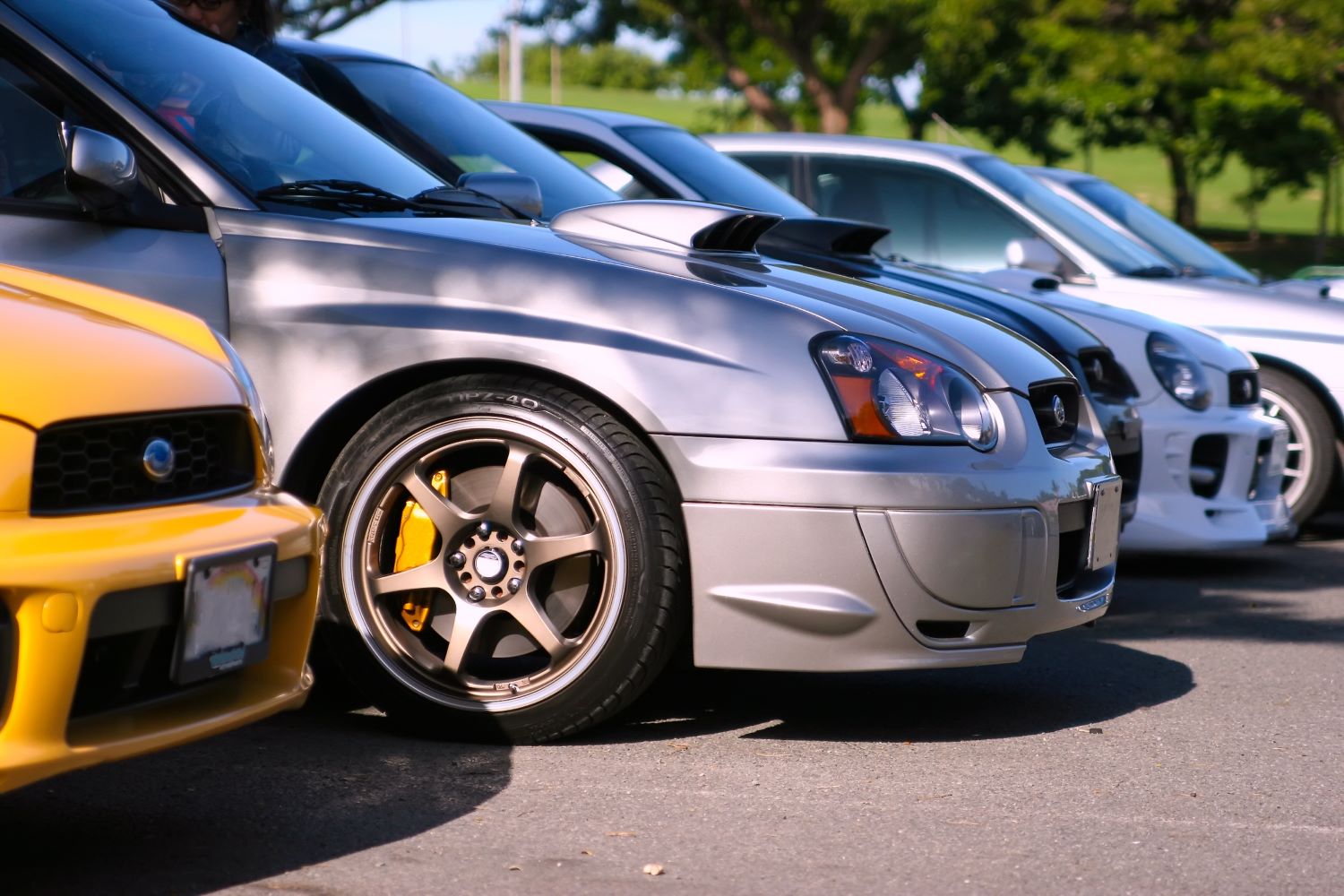Have you ever heard people talk of their plans to import a JDM car? That vehicle must be fantastic if they want to pay exorbitant shipping fees and wait months. But what is a JDM car? What are its qualities, and are the advantages enough to merit the time and expense to transport one to the US?
What Does JDM Mean For Cars?
JDM stands for Japanese Domestic Market. A JDM car refers to all models exclusively built in Japan and either sold there or exported to other countries without modification.
What Makes a JDM Car?
Not all vehicles manufactured in Japan count as JDM cars. Aside from being “made in Japan,” they must also meet other criteria.
JDM cars are for Japanese domestic consumption. Not only are they built in Japan, they also comply with local rules and regulations on matters like emissions, fuel consumption, and safety.
The most notable feature of JDM cars is their right-hand drive system. Unlike Americans, Japanese drivers use the left side of the road. Thus, vehicles intended for use in Japan have controls and the driver’s seat on the right front seat.
Examples of popular JDM car models include the following:
- Honda Civic Type R (before 2017)
- Nissan Skyline GT-R
- Mazda RX-7
- Subaru Impreza WRX STi
The Nissan Skyline GT-R is arguably the most desired of all JDM cars. It looks impressive and delivers incredible driving performance.
Some JDM cars have versions that use a left-hand drive system while retaining the same performance. The versions often sport a different model name and are sold in non-Japanese markets. However, they don’t count as JDM cars in the strict sense of the term because they underwent changes to make them legal for sale and use outside of Japan.

Comparing JDM and USDM Cars
Like JDM cars, vehicles intended for sale in the US are called United States Domestic Market (USDM) cars. They include cars built on American soil and in other countries like Japan that ship the finished product. If they meet American regulations on vehicles intended for sale in the domestic market, they count as USDM cars.
We can broadly compare the two designations and check their differences. Remember that the model and year can alter some of these characteristics, so they don’t always apply to JDM and USDM comparisons.
Engine
Most JDM cars use engines that operate better than USDM cars in many ways. JDM engines enjoy higher compression ratios, use more efficient parts, and might even include turbochargers as standard equipment.
On the downside, JDM cars also follow Japanese emissions standards. Japan imposes stricter limitations on emission levels, which can reduce engine performance aspects like total horsepower.
Suspension
JDM and USDM suspensions emphasize different performance aspects. A JDM car suspension feels tighter and stiffer for various reasons, such as the vehicle’s size, ground clearance, and the length of its shock absorbers.
In comparison, a USDM car suspension prioritizes smoothness and stability. It usually has better dampening performance to handle rougher road surfaces.
Headlights
A subtler difference between JDM and USDM cars involves their headlights. Depending on where the driver sits in the car, the headlights designed for that vehicle might have different performance.
The headlight on the driver’s side projects its beam at a higher angle to increase the distance the driver can see down the road. Meanwhile, the passenger side headlight lowers its beam to reduce the chances of blinding oncoming drivers with their glare.
JDM cars are right-hand drive vehicles, so their right headlight has a higher beam. Meanwhile, USDM cars are left-hand drive vehicles, which means their left headlight is the one that shines its beam higher.
The headlights on a JDM car will require either modification or outright replacement. Otherwise, the car might not meet legal requirements for safe driving on American roads.
Bumpers and Air bags
Much like headlights, the car bumpers and air bags in JDM cars might look and work differently than their American counterparts. JDM car design follows Japanese regulations.
Furthermore, JDM cars often have significant internal and external differences from USDM cars. A bumper that fits the front and rear of a JDM car might not have compatibility with a USDM car.
Much like headlights, the car bumpers and air bags in JDM cars might look and work differently than their American counterparts. JDM car design follows Japanese regulations.
Furthermore, JDM cars often have significant internal and external differences from USDM cars. A bumper that fits the front and rear of a JDM car might not have compatibility with a USDM car.
Emissions Control
JDM cars follow Japanese emissions standards, while USDM cars keep American regulations in mind. These can lead to differences in emission control systems, which affect engine performance and pollution levels.
Infotainment Systems
The infotainment system in a JDM car caters to Japanese preferences. Some features that Japanese drivers and passengers might take for granted don’t appear on the infotainment system of a USDM car.
JDM infotainment systems might also use the Japanese writing system and language instead of English. These systems have a steeper learning curve unless the user is fluent in Japanese.
Interior Features
When you enter a JDM car, you might find it different from what you’ve come to expect of a USDM vehicle. The manufacturer designed the interior of a JDM car to appeal to Japanese customers, after all.
Exterior Features
What applies to a car’s interior often also works for its exterior. JDM cars will probably have exclusive exterior features to entice and reward Japanese customers, such as badges and trim levels only available in Japan.

Can You Import a JDM?
It’s legal to order a JDM car and have it shipped from Japan to the US. Many people have ordered JDM cars despite having access to USDM versions.
Importing a JDM vehicle is also surprisingly affordable. JDM cars have attractive price tags because they’re common in Japan. Their low selling price usually offsets the expense of bringing them to the US via ship and paying the relevant fees–the import fee starts at right under $2,000. The older the model, the lower its cost, which leads to even more savings.
Why Import a JDM Car?
Here are some persuasive reasons for going through the trouble and expense of importing a JDM car:
Reliability
Everyone wants a car they can rely on for a long time. Well, JDM cars are dependable and have long service lives. They use high-quality parts and components with relatively low failure rates, reducing the frequency between repairs and maintenance jobs and keeping ownership costs low.
Fuel Economy
JDM cars also have good gas mileage. You have Japan’s strict regulations on fuel efficiency to thank for this. Japanese car manufacturers developed many technologies to reduce fuel consumption in JDM cars, which helps lower fuel bills.
Resale Value
JDM cars enjoy high resale value. You won’t find many outside Japan, much less in the US. Their rarity enhances their value in the eyes of potential buyers. If the vehicle is practically new, it can sell for several times its original price.
Design and Style
Many people love the design and style of JDM cars. Whereas USDM cars often use design language that appears to a broader target audience, JDM vehicles chart the course that Japanese sensibilities prefer. And the differences can prove refreshing to non-Japanese customers.
Compact Form Factor
Japanese cars –including JDM ones– are generally smaller than their counterparts. Their compact size plays no small part in their agility on the road. Many drivers appreciate those qualities, especially when maneuvering through narrow or crowded roads and parking in cramped areas.
Performance Features
Do you know how performers reward their most dedicated fans with perks like face-to-face meetings? Similarly, Japanese car manufacturers sometimes add extra features to JDM cars that push their performance envelope beyond that of their USDM counterparts. Domestic customers get to enjoy these Japanese-only features.
Are you now interested in JDM cars? Hopefully, this quick guide helped you understand these fascinating vehicles.
Find Replacement Headlights For JDM Cars
If you own or plan to obtain a JDM car, parts like the car bumper and headlights require replacement to meet American standards. You’ll want to avoid legal problems and safety issues on the road. Good thing you can find bumpers and headlights at CarParts.com that fit your JDM car and meet American requirements.
CarParts.com provides an easy and accurate way to find bumpers, headlights, and other automotive parts for your JDM car that comply with American requirements. Simply plug your vehicle’s year, model, and engine into our website’s integrated vehicle selector, and you’ll see products that fit your application. Our team of industry experts vet our products to ensure they meet world-class standards and deliver the performance you deserve. If you have any questions about our bumpers and headlights, our customer service team is ready to assist you.
If you live in the continental US and order before noon ET, you can get your new parts from CarParts.com in several business days. Order high-grade car bumpers, headlights, and more today!
Any information provided on this Website is for informational purposes only and is not intended to replace consultation with a professional mechanic. The accuracy and timeliness of the information may change from the time of publication.

















